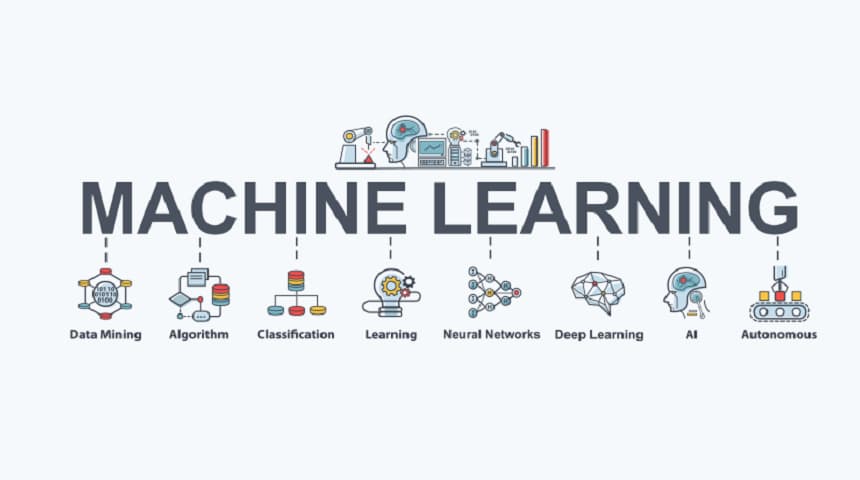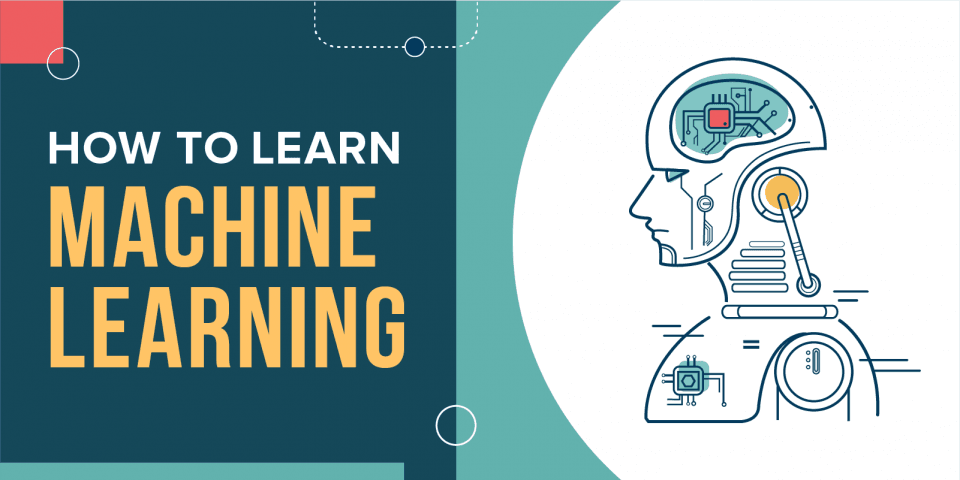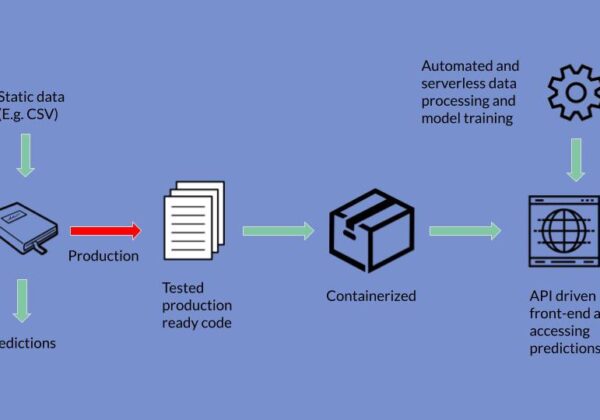When it comes to machine learning (ML) or artificial intelligence (AI), most people want to know: is machine learning difficult to learn? On the surface, why many people think it is a complex subject is understandable. Although you do need to know some basic mathematics – including probability, statistics, and linear algebra – have programming knowledge, and be able to use algorithms skillfully, entering machine learning is not as challenging as you think.
Once you have a basic understanding of machine learning, you can apply it to real-world problems.
In this guide, we will answer your urgent question: how difficult is machine learning? In addition, we will share some useful resources to help you get started.
Table of Contents
What is Machine Learning?

Machine learning is to teach computers to think and act like human brains without human intervention. It is a data analysis method, which can automatically perform the analysis model building process. Machine learning is a branch of artificial intelligence. Its working principle is that machine systems learn from data and make decisions according to the patterns they collect.
For example, image and speech recognition is a significant use case of machine learning in the world today.
Suppose you want the software to recognize objects in an image. The first thing you have to do is give it a lot of training data. In this case, it will be a pile of images containing the marked objects you want it to recognize. You will then use machine learning algorithms to teach AI how to recognize these objects.
After artificial intelligence is trained, you can give it new images, and it can recognize the objects in them.
How Does Machine Learning Work?
Machine learning works by imitating human learning. The machine recognizes the patterns in the data and determines the operation according to the way it is programmed to process a particular type of data. Machine learning may automate anything through an organized set of rules, guidelines, or protocols.
Machine learning uses two basic techniques: supervised learning and unsupervised learning. Supervised learning provides the machine with a training sample to teach it which patterns to recognize. By doing so, you are monitoring its learning. The machine analyzes the data you label and classify, and predicts the results. An example of supervised learning is the junk e-mail folder: the machine analyzes the sender and e-mail subject and sorts them accordingly.
Unsupervised learning requires machines to derive unknown similarities and discoveries from unlabeled data. An example of this is clustering, a method in which machines divide data points into clusters. Each cluster contains points that are similar to each other and differ in another way from data points in other clusters. The machine itself recognizes patterns in the data, generating insights or recommending actions. An example of unsupervised learning is customer segmentation, where an enterprise’s customer data is grouped according to their purchase patterns and interactions with the company.
The Importance of Machine Learning

Machine learning can automate simple tasks, such as data entry or compiling contact information lists into specific formats. It can also make major technological changes, such as dynamic pricing of event tickets or public transport delay alerts. The benefits and advantages of machine learning are explained in more detail below.
- Efficient processing of multi-dimensional and multi-variety data
Applications that use machine learning can analyze data and draw conclusions or make recommendations at a faster or more complex level than humans can do on their own. A paper published by MIT and Michigan State University found that its machine learning technology can analyze data and come up with solutions 100 times faster than human beings.
The banking industry is a good example. Banks such as Chase Bank and Citibank use artificial intelligence to detect money laundering or fraud. Not only is it impossible to hire enough people to manually detect these trends in financial transactions, but these employees may also miss a large number of illegal activities.
- Scope of improvement
You can identify areas of improvement for machine learning applications by paying careful attention to their use of algorithms. Programming languages such as Python can identify areas for improvement in machine learning applications.
The improvement of Machine Learning Applications aims to explain the behavior of artificial intelligence, or in other words, determine whether these behaviors solve the problem that the application was invented to solve. Some techniques for testing applications include testing machines against humans, establishing avoidable biases, and adjusting algorithms to make them as accurate as possible. Develop software to accelerate or assist in data analysis, data entry, and interpretation.
- Automation
Machine learning programs are designed to automate tasks or draw conclusions from data sets much faster than human manual analysis. Your coding skills are used here because you have to fine-tune the algorithm. It takes intuition to identify when an algorithm doesn’t work or when it doesn’t work well enough.
- Wide range of applications
From smart speakers to autonomous vehicles, machine learning provides information for many recent breakthroughs or innovations in existing technologies. Google’s real tone aims to more accurately display the photos of people of color, which is a meaningful recent innovation in the field of artificial intelligence and machine learning. Real tone’s AI uses finer auto white balance and more advanced auto-exposure technology.
- Trends and patterns
Use machine learning techniques to discover patterns in data and often recommend actions based on these patterns. For example, the Google Home Mini in your bedroom will interpret your voice and learn from the phrases you often use in questions to improve accuracy and speed.
What Makes Machine Learning Hard To Learn?
Is machine learning hard? Yes. But what makes learning so difficult? Below are some factors that can sometimes prove challenging when you start machine learning.
Extensive Programming Knowledge.
To implement machine learning algorithms, you need a strong understanding of programming languages such as Python, Julia, and other high-level programming languages.
Mathematical Skills
It helps if you are proficient in basic mathematical concepts such as probability, statistics, and linear algebra, and understand machine learning algorithms. Due to the complexity of these concepts, it is difficult to grasp them. You also need to learn how to use each idea in machine learning, which requires a deep understanding of these topics, not just the basics.
Distributed Computing.
Machine learning algorithms typically scale when they are distributed across a large number of computers during training. If you want to get into distributed computing, you need some knowledge of software engineering and cloud computing.
Difficult Algorithms
Machine learning algorithms can be difficult to understand, especially for beginners. Each algorithm has different components that need to be learned before applying them. Even so, not all algorithms work well with your dataset or business problem, so experimentation is required to find the right approach.
Deep Learning
Deep learning is a branch of machine learning that uses deep neural networks to develop algorithms capable of achieving human-level performance in complex tasks. To learn deep learning, you need a solid understanding of mathematics and statistics in addition to programming skills.
How to Start Learning Machine Learning

When it comes to machine learning, a little knowledge has a long way to go. Various supervised and unsupervised learning models are implemented in R and python. These models can be obtained for free and can be set directly on your own computer. Even simple models such as linear or logistic regression can be used to perform interesting and important machine learning tasks.
We should mention that many more advanced tools do require a deep understanding of advanced mathematics, statistics, and software engineering. Some key skills include the understanding of probability and statistics, complex linear algebra, and calculus, so as to master the basic knowledge of machine learning and easily process data matrices.
If you want to pursue machine learning, you’d better start with these key mathematical concepts, and then turn to code from there. Many AI-related languages, such as python, are considered relatively easy.
For those who are already proficient in mathematics, the next step is to choose the right machine learning framework. Essentially, there are a number of libraries to choose from when building models, such as NumPy, sci-kit learn and pandas. The difficulty of these toolkits depends on the advanced level of the project. Find a simple framework to start with and develop from.
How Long Does It Take To Learn Machine Learning?
A bachelor’s degree in machine learning takes about four years. Here you can find a complete list of American universities offering bachelor’s degree programs in machine learning.
At the same time, a master’s degree usually takes an additional two years.
If you have previously received formal education in machine learning or related disciplines (such as artificial intelligence, data science, computer science, or Mathematics), you can start with a short certificate or course. Beginners need to take a detailed course, which is expected to take 6 to 18 months to deepen their understanding of the topic.
What Are the Requirements to Get into Machine Learning?
To prepare for a machine learning career, you need to lay a solid foundation in computer science, programming, linear algebra, calculus, and statistics. You will often use these topics in machine learning education and work experience. A bachelor’s degree in computer science, information systems, or mathematics can be a good foundation for further education in artificial intelligence.
Your desire to learn more, improve existing systems, and create useful applications for machine learning technologies will take you further and help you build your career aspirations.
Final Words
The information about machine learning is extensive and detailed, and you can learn more about anything related to this field through the resources highlighted here.
Find various learning opportunities on Coursera about machine learning and related sub-topics. Gain more knowledge and practice and improve your skills through online degree courses or specialization in topics such as in-depth learning, applied artificial intelligence, applied data science, and neural networks.




